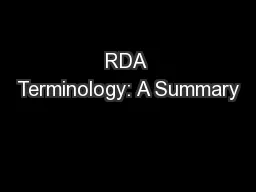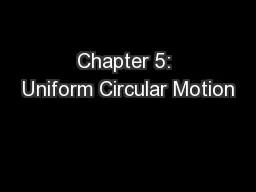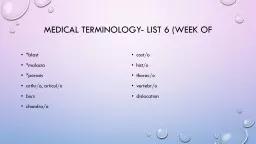PPT-Uniform terminology
Author : trish-goza | Published Date : 2018-01-09
Chronological Development In 1979 1 st edition of uniform terminology was approved and published by AOTA Purpose To create an uniform system for reporting Occupational
Presentation Embed Code
Download Presentation
Download Presentation The PPT/PDF document "Uniform terminology" is the property of its rightful owner. Permission is granted to download and print the materials on this website for personal, non-commercial use only, and to display it on your personal computer provided you do not modify the materials and that you retain all copyright notices contained in the materials. By downloading content from our website, you accept the terms of this agreement.
Uniform terminology: Transcript
Download Rules Of Document
"Uniform terminology"The content belongs to its owner. You may download and print it for personal use, without modification, and keep all copyright notices. By downloading, you agree to these terms.
Related Documents














